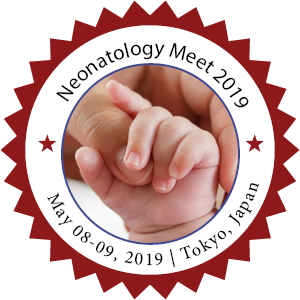
Nira khanal Bhattarai
Manipal Teaching Hospital, Nepal
Title: An abstract on factors causing neonatal sepsis
Biography
Biography: Nira khanal Bhattarai
Abstract
Factors causing neonatal sepsis
Abstract
Neonatal sepsis is major cause of mortality and morbidity in newborn in Nepal. There are many factors contributed to neonatal sepsis. The organisms responsible for early onset and late onset sepsis are different. Descriptive hospital based study over the period of three months was conducted at Neonatal Intermediate Care Unit of Community Hospital and Research Center, Chitwan. Demographic information and outcome data were collected from primary and secondary sources. Blood samples from the suspected infants were collected and processed in the bacteriology laboratory. Out of 17 suspected cases, the septicemia was confirmed in 10 cases. Early-onset septicemia was observed in 6 infants and late-onset septicemia in 4 infants. Among the infants with early onset septicemia, Escherichia coli were found to be the most common organism in early onset septicemia whereas Staphylococcus aureus was more common in late onset sepsis. Preterm delivery (baby born at 32 to 34 weeks of gestation) and low birth infants (weighing less than 2.5 kg) have the highest rates of early onset infection and fewer infected cases were acquired by rupture of membrane lasting longer than 18 hours and frequent vaginal examination during labor. Likewise, most of the cases (3/4) were caused by having intravenous catheter more than 72 hours and only minimal cases staying for extended period of time in late onset sepsis. In managing these cases, both of these isolates were sensitive to most of antibiotics frequently used as first line drugs are injection Amikacin, Gentamycin, Ampicillin and Cefotaxim. Those antibiotics were administered at required dose. Other symptomatic treatment and conservative management were carried out in addition to antibiotic therapy during hospitalization. Patients were fully recovered and discharged from hospital. It is essential to make all stakeholders responsible every aspect to be responsible to minimize these cases.

